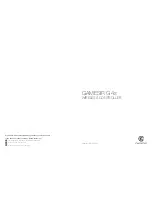
Page
32
of
84
•
Torque and angle measurement details:
o
Peak Torque is used for the overall evaluation and reported:
The peak torque achieved, from the start of the rundown to the when the torque falls
below the cycle complete value set in the PSet
o
Torque is used for the stage evaluation:
The torque at the point in time when the stage was terminated or completed
o
Peak Angle is used for the overall evaluation and reported:
The peak angle achieved, measured from the angle reference set in the final audit
stage, to the when the torque falls below the cycle complete value set in the PSet
Note:
If an angle reference is not defined in the final audit stage, the angle is
measured from when the torque first crosses the In-Cycle torque set in the PSet.
o
Angle is used for the stage evaluation:
The angle at the point in time when stage was terminated or completed, measured
from the angle reference set in the stage.
Note:
‘Audit Stages’ are stages that have torque and angle limits defined. These
stages include:
o
TC Stage
o
TC_AM Stage
o
TC_AC Stage
o
AC_TM Stage
o
AC_TA Stage
o
AC_TCOMP Stage
o
Unfastening Stage (If Audit is selected)
Note:
If the evaluation of any stage during the rundown fails, or a bail out limit is exceeded,
the fastening cycle will be terminated early and any subsequent stages will not run.
4.2.7 Multiple Stage Rundown Examples
EXAMPLE:
Two-stage rundown with downshift
This example shows a typical two stage rundown with a higher first stage free speed and slower
downshift speed to minimize overshooting of the target torque.
















































